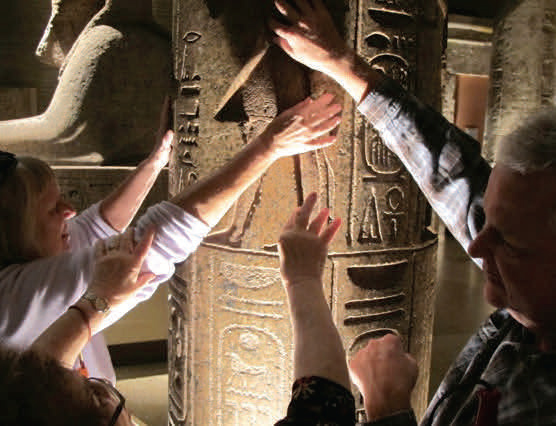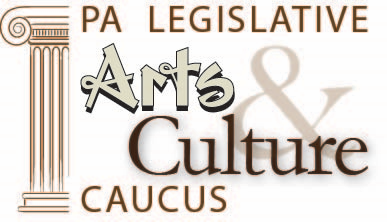Rusty Baker, PA Museums

Photo Courtesy of the University of Pennsylvania
Museums are working on ways to expand access to their programs whether it’s a change in hours that are friendly to the working individual, exhibits to reflect the diversity of a community, or in programs which accommodate those with special needs. In the fall of 2013 the University of Pennsylvania Museum of Archaeology and Anthropology launched its “Insights into Ancient Egypt” Touch Tours designed with and for Museum visitors who are visually impaired. The Touch Tours explore the scent of fluids used in the mummification process and encourage the touching replicas of small Egyptian and selected stone artifacts with guidance from museum staff and volunteers, some of which have visual impairments themselves.
Trish Maunder, Project Coordinator for Special Tours and a disabilities program consultant for the Museum, worked with Egyptian section Associate Curator Jennifer Wegner, the Museum’s Community Engagement Department to develop the program and its expanded offerings. Through focus groups and feedback from visually impaired guests, she learned that participants wanted more information, educational opportunities, and even outlets for artistic expression—all included in this season’s offerings.
“Many visitors from our program last year reported a significant shift in awareness and a sense of inspiration from the ancient world,” noted Ms. Maunder. “We wanted to honor that experience, and help create opportunities for further discovery.”
There are many reasons this success story at The Penn Museum received worldwide media attention. Anyone who has seen a “Please Do Not Touch” sign in a museum or has drifted too close to something and set off a gallery’s motion alarm or has been asked to step back by a museum worker is sure to understand that touching an ancient treasure is not usually what one can expect as part of a museum experience. Museums are thoughtfully and carefully moving away from blanket rules of no touching and no taking pictures so visitors can have a profound experience and share it with others. Museum success today depends upon accessibility in multiple directions –to every sort of visitor including those with digital access, to patrons, funding sources and advocates, to news outlets, to everyone.
